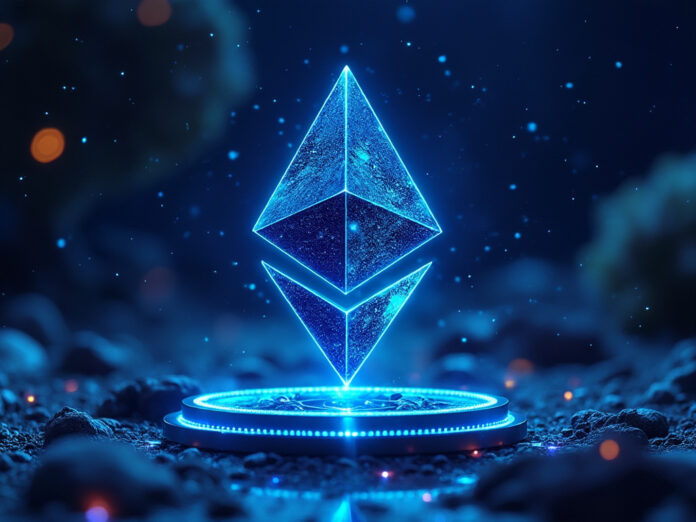
Ethereum developers reveal what could be the near future of Ethereum: Beam Chain or better known as Ethereum 3.0
Recently, Justin Drake, a researcher at the Ethereum Foundation, presented a proposal called «Beam Chain» at the conference Devcon in BangkokThis proposal seeks to modernize Ethereum’s consensus layer, integrating the latest advances in cryptography and addressing technical inefficiencies. But what exactly is Beam Chain and how could it transform Ethereum? Let’s explore it in detail.
From Beacon Chain to Beam Chain: a new era for Ethereum
The current Ethereum consensus layer, known as Beacon Chain, was officially launched on December 1, 2020. This chain marked the beginning of Ethereum's transition to a proof-of-stake (PoS) consensus mechanism, kicking off what is known today as Ethereum 2.0.
However, blockchain technology is advancing rapidly, and researchers now have a clearer understanding of complex elements such as Maximum Extractable Value (MEV) and advances in cryptographic tools, especially SNARKs (concise non-interactive arguments of knowledge) and zkVMs (zero-knowledge virtual machines).
With all this knowledge as a foundation, the developers now propose a new evolution for Ethereum: the Beam Chain. Beam Chain would involve a complete redesign of Ethereum's consensus layer, with the aim of achieving a safe and fast transition from the current Beacon Chain to a more advanced version. This redesign will focus on three main areas: block production, staking structure, and cryptography.
Improvements in block production
One of the main improvements proposed by Beam Chain is the decentralization of the builder and relay levels of Ethereum, with a clear objective: increasing resistance to network censorship. Furthermore, this new iteration seeks to reduce slot times in order to make them faster. More precisely, it seeks to reduce block generation to four seconds and thereby achieve faster completion. This will allow for greater efficiency in the network, reducing transaction confirmation time and improving processing capacity.
For example, Ethereum currently has a block time of around 12 seconds, which can be slow compared to other blockchains. With Beam Chain, this time will be reduced to four seconds, significantly speeding up transaction speeds. Additionally, the decentralization of builders and relays will ensure that the network is more resistant to manipulation and censorship, as it will not be as reliant on centralized entities.
Reduction of minimum staking
Another important improvement is the reduction of the minimum ETH required to become a validator. Recall that currently, 32 ETH is required, which limits access to staking to a small group of users. With Beam Chain, this would no longer be a problem. The update proposes to reduce this amount to just 1 ETH, which could make staking more accessible to a much wider audience.
At the same time, this reduction has the potential to increase participation in the network, improving decentralization and security. For example, if currently only a small group of users can stake 32 ETH, with Beam Chain, a much larger number of users could stake 1 ETH, distributing validation power and reducing the risk of centralization.
Zero-proof cryptography and better post-quantum security
Beam Chain will also incorporate quantum-safe, SNARK-based cryptography using hash-based signatures. This will enable the generation of consensus proofs in real-time on standard hardware, ensuring that Ethereum remains resilient even as quantum computing capabilities develop.
Zero-proof cryptography, such as SNARKs, allows transactions to be verified without revealing sensitive information, improving privacy and security. Additionally, post-quantum signatures ensure that transactions remain secure even in a future where quantum computers can break current cryptography.
Benefits and challenges of Beam Chain
Despite Beam Chain's ambition, Drake is cautious about referring to this proposal as «Ethereum 3.0». Beam Chain focuses solely on the consensus layer, without altering the data layer (such as blob channels) or the execution layer (EVM). This means that Beam Chain is more of an evolution than a complete new version of Ethereum.
In fact, implementing multiple major upgrades at once offers both technical and governance benefits. Known as “fossilization acceleration,” this approach seeks to bring Ethereum into maintenance mode earlier, reducing long-term uncertainty. Additionally, implementing technologies like ZKVM and SNARKs will improve the security and efficiency of the network.
However, Beam Chain also presents significant challenges. Implementing real-time consensus proofs and post-quantum cryptography involves significant technical hurdles, including changes to hash functions, signature schemes, and state serialization methods. Furthermore, implementing multiple major changes simultaneously increases systemic risk, requiring rigorous testing and validation to ensure network security.
Community coordination and broad consensus building are crucial. Participation from multiple customer teams will be required, including onboarding new teams and training on new technologies. Additionally, the diversity of zkVMs requires ensuring compatibility across deployments to avoid fragmentation.
Threat to Layer 2?
On the other hand, and contrary to rumors, Beam Chain does not pose a threat to Ethereum’s Layer 2s. In fact, it is a positive improvement that complements the rollup-based scalability strategy. Layer 2s, such as Polygon and zkSync, will continue to play a crucial role in scalability and reducing transaction costs.
Beam Chain will improve Layer 1 efficiency, reducing operational costs and enhancing security. However, Layer 2s will still manage user traffic and applications, complementing Layer 1 functionality. Additionally, integrating alternative VMs on Layer 1 could enable interoperability between Layer 2s, optimizing and refining the Ethereum ecosystem.
This makes it clear that Beam Chain is an ambitious proposal that seeks to modernize Ethereum’s consensus layer, integrating the latest advances in cryptography and addressing technical inefficiencies. While it presents significant challenges, improvements in block production, staking structure, and cryptography offer the potential for a faster, more secure, and decentralized network.



